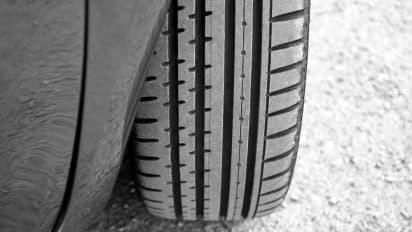What to Consider When Choosing the Right Tires

Synopsis
null
Choosing the right tires can be daunting, and several factors must be considered. However, with proper maintenance, tires are essential to ensure driver safety, optimize performance, and extend a vehicle's lifespan. One of the first steps is determining if the tires need to be replaced, as other maintenance issues could also affect performance.
After ensuring that the tires must be replaced, factors include safety, seasonal awareness, tire tread and pressure, and performance and longevity. Budget is always a consideration, but understanding what to look for can help strike the right balance between cost and quality. Industry experts like NeoTires emphasize routine inspections and customized tire recommendations to address individual driving habits and regional climates.
Prioritizing Safety Above All Else
Safety is the top priority when choosing the right tires for your vehicle. The owner's manual will have the correct tire size and load capacity for your car, or it will be printed on a label inside the driver's door jamb. The correct size is critical for proper maintenance and ensures a smooth and safe ride.
Tires don’t have a fixed expiration date, but replacing them within five years of manufacture is generally recommended. Sun, road conditions, and other factors weaken tires, and though they may not show signs of wear, they should be replaced because of unseen conditions that could cause a blowout or other considerable damage.
Seasonal Awareness and Climate Considerations
Seasonal awareness is critical when choosing tires because climate significantly affects their longevity. Summer tires are designed for higher temperatures, winter tires are geared for cold weather conditions like snow and ice, and all-season tires provide a balance, though they may not perform as well as season-specific options.
Summer tires provide more road grip and are designed to sustain high temperatures and wetter conditions. Winter tires are essential for snow and ice and are made with a special rubber compound that gives them flexibility in cold conditions so they don’t freeze. All-season or all-weather tires perform well in temperate conditions and provide a decent road grip that does not require seasonal changes. Where you live is an important safety factor when choosing tires to ensure they have the proper grip and density to withstand extreme weather conditions and provide a comfortable transit.
Tread Depth and Pressure
Tire tread is essential for road grip, especially in wet conditions, and can prevent hydroplaning. You can use the "penny test" to determine if your tire tread is too low by placing a penny upside down between two tread ribs. If you cannot see Lincoln's head, the tread is below 2/32 inches, and the tire should be replaced. Professional tire shops will provide a complete inspection to help you consider this. Driving on tires with insufficient tread is dangerous and could lead to blowouts or hydroplaning because water can get between the tire and the road.
The owner's manual lists a vehicle's proper tire pressure, which should be checked routinely on the inside of the driver's door jamb. Correct tire pressure is essential for fuel efficiency, optimum wear, and safety. Over- or under-inflation can cause the tire to wear unevenly, leading to maintenance issues or the need to replace it more often, which can cause severe handling issues.
Performance and Longevity
The correct tire size and proper maintenance enhance a vehicle's handling, reduce rolling resistance, and offer better mileage, which adds up to savings over time. There are many different tires to choose from, and choosing the correct one depends on your driving style, vehicle type, and road conditions that you most frequently traverse. Different tread patterns for wetter conditions provide different levels of grip, all of which should be considered before purchasing new tires.
Stay updated with all the latest Business News, including market trends, Share Market News, stock updates, taxation, IPOs, banking, finance, real estate, savings, and investments. Track daily Gold Price changes, updates on DA Hike, and the latest developments on the 8th Pay Commission. Get in-depth analysis, expert opinions, and real-time updates to make informed financial decisions. Download the Asianet News Official App from the Android Play Store and iPhone App Store to stay ahead in business.